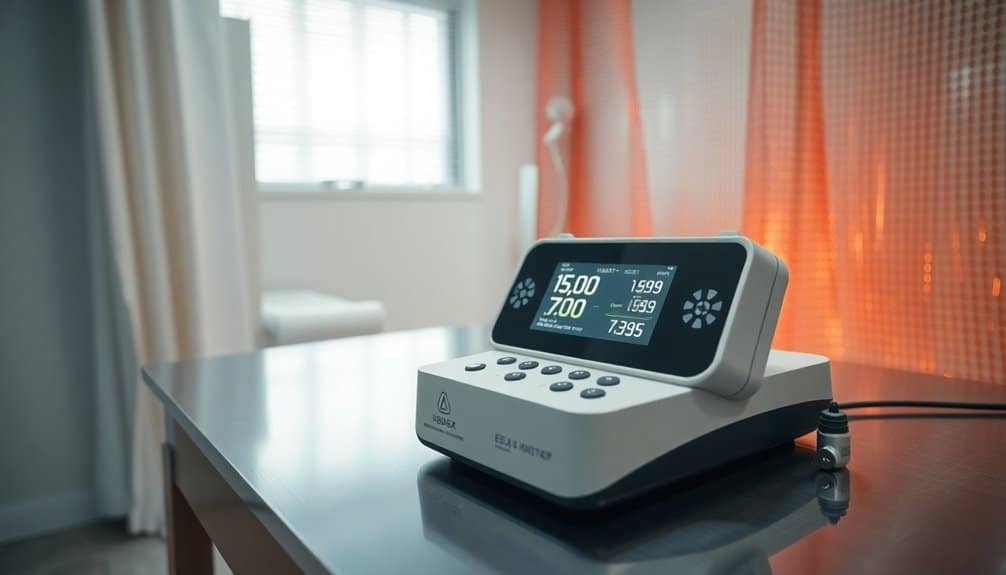Electromagnetic Hypersensitivity (EHS) – Real or Not?
Electromagnetic Hypersensitivity (EHS) involves symptoms like headaches and fatigue attributed to electromagnetic fields (EMFs), such as from cell phones and power lines, but scientific evidence does not strongly support a causal link. Studies indicate no significant connection, and psychological factors may amplify individuals’ experiences.
Effective management strategies, such as Cognitive Behavioral Therapy and lifestyle changes, can help alleviate symptoms. There is still more to learn about the complex nature of EHS.
Disclaimer: As an affiliate, I may collect a share of sales from the links on this page.
Understanding Electromagnetic Hypersensitivity (EHS)

Electromagnetic hypersensitivity (EHS) refers to a condition where individuals report adverse health effects attributed to exposure to electromagnetic fields (EMFs). EHS is tied to human-made EMFs, originating from sources like power lines, appliances, and cell phone towers. Symptoms vary among individuals, often including headaches, fatigue, skin issues, and cognitive difficulties. Approximately 1.5% to 5% of the population report symptoms consistent with EHS, highlighting the varying prevalence rates among different regions and demographics. Studies have suggested that non-ionizing radiation may be a contributing factor to these symptoms, yet the connection remains contentious. Reported prevalence ranges from 3 to 10 percent in developed nations, with higher rates in Scandinavian regions. Individuals may also experience mood disturbances and sleep disruptions. While suspected triggers focus on EMF exposure, the precise mechanism behind EHS remains unclear, complicating diagnosis and management strategies for affected persons.
Scientific Evidence Surrounding EHS
Scientific studies on electromagnetic hypersensitivity (EHS) reveal a complex landscape of evidence, often lacking robust support for causal links. The electromagnetic hypothesis lacks biophysical plausibility since proven effects of electromagnetic fields (EMFs) can’t explain EHS symptoms. While thermal effects exist, they require exposure levels much higher than typical daily encounters. Recent estimates have identified 1667 reported cases in France, reflecting an increasing self-identification of individuals experiencing EHS. Research on non-thermal EMF impacts remains inconclusive, often due to methodological limitations. Meta-analyses show no significant association between EMF exposure and symptoms. In addition, randomized provocation trials haven’t established a clear causal relationship. Despite this, many healthcare professionals aim to enhance the quality of life for those claiming to experience EHS. Furthermore, low-level radio frequency radiation exposure from various sources may contribute to the uncertainty surrounding EHS symptoms.
The Experience of Symptoms and Their Impact

For those who report symptoms of EHS, the experience can often be debilitating and confusing. Common symptoms include headaches, fatigue, anxiety, and sleep disturbances. Dermatological issues, like rashes and tingling sensations, can also occur. These symptoms are non-specific and vary among individuals, with about 10% experiencing severe cases. The impact on daily life can be significant, leading to reduced exposure attempts and reliance on alternative medicine. Financial implications arise from spending on ineffective EMF shielding devices. Psychological stress often accompanies these symptoms, exacerbating anxiety and concerns about EMF exposure, highlighting the critical need for supportive clinical evaluation. Many individuals with EHS face challenges due to the lack of scientific validation regarding the perceived need to eliminate EMF exposure. Additionally, the developing brains of children can be particularly vulnerable to EMF effects, leading to more pronounced symptoms in younger populations.
Theories and Mechanisms Behind EHS
Understanding the theories and mechanisms behind electromagnetic hypersensitivity (EHS) requires an exploration of various perspectives.
The electromagnetic hypothesis links EHS symptoms to exposure from devices like cell phones. The cognitive hypothesis suggests beliefs about EMFs drive the nocebo effect, while the attributive hypothesis connects EHS to existing health issues.
Psychological factors can amplify symptoms, such as anxiety or fear. Some researchers consider neurological effects from EMFs, but evidence remains inconclusive.
Additionally, physiological responses and potential changes in the immune system warrant research. Contextual variables, like urban versus rural EMF levels, also shape individual sensitivity to EMFs.
Approaches to Treatment and Management

While exploring effective approaches to treatment and management of electromagnetic hypersensitivity (EHS), clinicians often consider various strategies tailored to individual needs.
Cognitive Behavioral Therapy (CBT) can effectively manage symptoms. Stress management techniques, like yoga and meditation, reduce anxiety. Environmental changes help lower exposure to electromagnetic fields. Therapies also aim at treating underlying conditions.
Alternative methods include photobiomodulation therapy and antioxidant pharmaceuticals for mitigating stress. Lifestyle modifications focus on reducing exposure, improving sleep hygiene, and fostering community support.
As research progresses, identifying biological markers and developing non-pharmacological interventions may enhance treatment outcomes for EHS.
Frequently Asked Questions
Can EHS Be Diagnosed by Medical Professionals?
You can’t get a formal diagnosis from medical professionals for this condition since it lacks recognition. Instead, they often conduct extensive evaluations to identify underlying issues contributing to your symptoms and suggest management strategies.
Are There Any Established Risk Factors for Developing EHS?
Current research hasn’t identified established risk factors directly linked to electromagnetic exposure. However, if you’re sensitive to stress or generally responsive to environmental stimuli, you might be more likely to report symptoms attributed to these factors.
How Prevalent Is EHS in the General Population?
You’ll find EHS prevalence varies widely, with estimates fluctuating from a couple of individuals per million to higher self-reported rates in certain countries. Factors like geography, demographics, and reporting methods influence these numbers considerably.
What Environmental Factors May Exacerbate EHS Symptoms?
Environmental factors exacerbating symptoms include proximity to EMF sources, prolonged exposure to electronic devices, and stress from urban settings. Inadequate indoor environments and high chemical presence can also intensify your experience and increase sensitivity.
Are There Support Groups for Individuals With EHS?
Yes, there are support groups for individuals like you, offering networking opportunities, resources, and a sense of community. You can connect with others, share experiences, and gain valuable strategies for managing symptoms effectively.
Conclusion
Electromagnetic hypersensitivity (EHS) remains a complex issue. Although many report symptoms, no definitive causal link has been scientifically proven. Theories explaining EHS vary, and study results are inconsistent. Current management focuses on symptom relief rather than direct treatment. Future research may shed light on possible psychosomatic aspects of EHS, warranting continued investigation.






